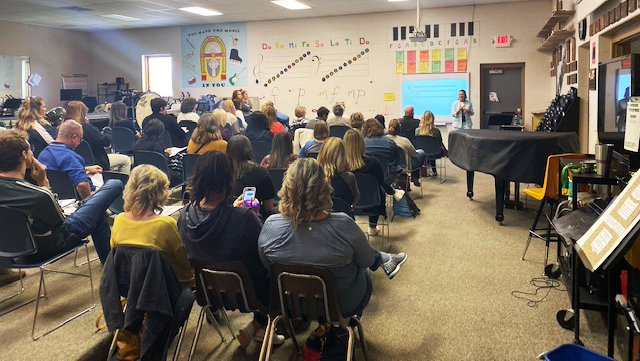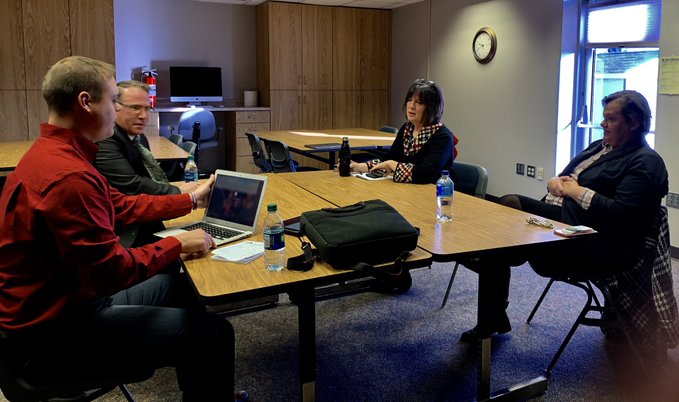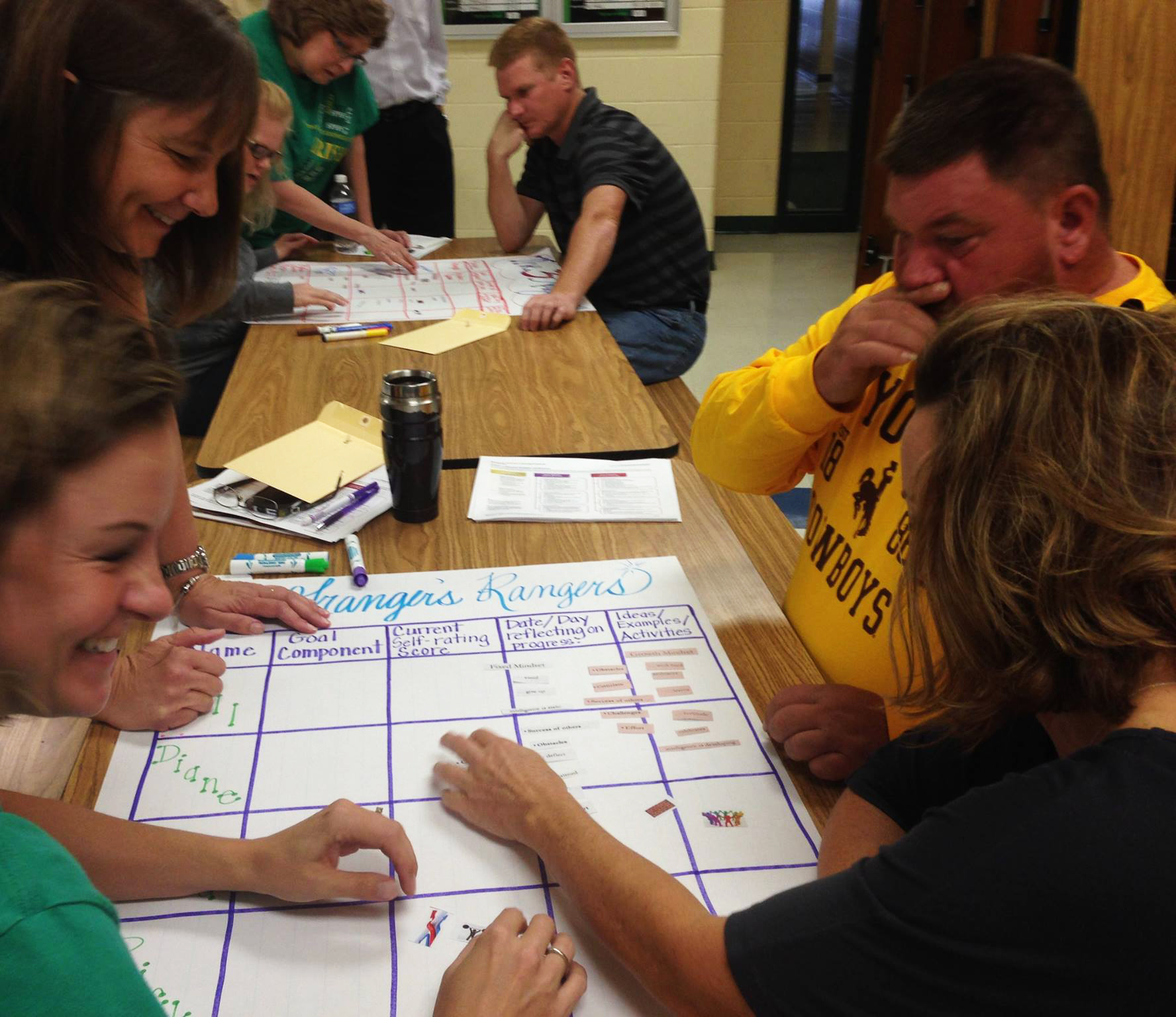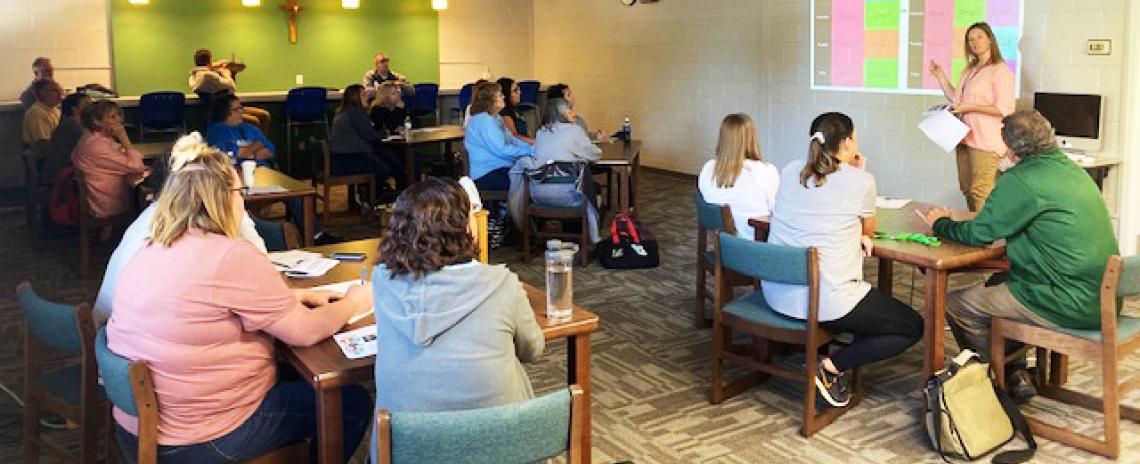Community, Collaboration and a Partnership with Kids at its Core
Community, Collaboration and a Partnership with Kids at its Core
By Tyler Dahlgren
Part One: At the Table
Around a conference table in North Platte, three professionals in the field of education gathered to share a story they frankly didn’t even know existed to tell. It’s a story of community, collaboration and a partnership that functions because of what is at its core: Kids.
Around here, it’s always been about kids.
And though they line the interstate and highways leading into and leaving town, in this education community, there are no silos. Education Service Unit 16, North Platte Public Schools and North Platte Catholic Schools do not operate on islands. Deb Paulman, Kevin Dodson and Peggy Romshek understand the importance of building bridges.
Around here, it’s what they’ve always done.
“It’s never been ‘we’ and ‘them’, it’s always just been ‘us’,” said Dodson, Superintendent of NPCS. “From our perspective, the professionalism ESU 16 and North Platte Public Schools offer our students and our staff is second to none and makes us better.”
ESU 16 is a service agency, it says so right there in the name, and provides a multitude of services including extensive professional development to 16 public school districts, and non-publics as well. Anywhere there’s a classroom full of students, really.
“Our work should always point back to the classroom, and we don’t care where those classrooms are,” said Paulman, who is in her third year serving as Administrator for ESU 16. “We care about the kids who are in those classrooms, and the teachers and staff serving those children.”
As NPPS’s Director of Special Education, Romshek has no use for barriers. The law states that if a young person lives within the district, then NPPS is required to provide a Free and Appropriate Public Education (FAPE), no matter which school the student attends.
Around here, a law isn’t needed to dictate such services. Culture handles that. Resources are shared and maximized. When Romshek settled into her current position in 2016, NPPS was already providing special education services on-site in the catholic schools.
“We just go in and provide it, and that’s what we do and it’s a way of life for us,” said Romshek, who as a student attended public school through the eighth-grade before graduating high school from David City Aquinas. “I attend quite a few Individualized Education Programs (IEPs) in their buildings, and I’m always made to feel so welcomed at those meetings. They are just so appreciative, too, and I think the mutual respect between us is huge.”
“Strong schools and excellent educators make a world of difference to a community,” said Dodson. “North Platte, and the surrounding area for that matter, does a great job of providing both.”

Part Two: Open Lines of Communication
Ask a question, and let them go.
Chances are, the responses from Paulman, Dodson and Romshek will synch up at some point. They’re on the same page, and fluid lines of communication are crucial to coordinating a partnership like theirs.
“If there are questions, we’re going to pick up a phone and communicate with each other, because we understand that support system exists and we’re going to us it as often as we can,” said Dodson, who has spent 25 years in education, the last nine in his current role. “There seems to be a misconception about the relationship between public and non-public, and I’m not sure why that exists. I’ve never experienced anything like that out here.”
Dodson is willing to bet Paulman and Romshek have shared in those experiences. They nod in agreement.
“With all three of us at this table, that’s our mission and our purpose, to make sure all of our students are being served to the best of our abilities,” he added.
Paulman said the partnership and pooling of resources is something that’s done intentionally and, sometimes, comes about naturally. The ESU asks questions year-round.
“What are your districts professional development needs? What are the specific professional learning needs for your staff? How can we support those?”
This year, for example, ESU 16 is supporting a math adoption plan to shore up an elementary-level curriculum issue at NPCS, and will remain in constant communication with teachers there throughout the implementation process and beyond.
“The information and the partnership they provided in helping us make that decision was outstanding,” said Dodson.
The Nebraska Department of Education was another peg on which that working relationship stood, strong and sturdy. The high-quality instructional materials used to resolve the issue originated with an NDE initiative, said Paulman.
“There is absolutely a public and non-public link,” she explained. “And we do care about and support each other.”
NPPS has a staff member who works nearly full-time at NPCS’s two buildings—St. Pat’s Junior/Senior High School and McDaid Elementary—and spends her other time at Our Redeemer Lutheran School. If there is a complication, be it with scheduling or other logistical specifics, Romshek doesn’t hesitate to call Dodson.
Every summer, she holds a meeting to plan non-public services. NPCS is always in attendance. In education, resources are already stretched thin as it is, so it helps, both ways, to have the extra support. There’s a significant shortage in speech pathology instructors in the special education arena, and during Romshek’s first year as Director of Special Education, she was unable to provide a teacher on-site.
They worked together to offer tele-therapy, a speech pathologist providing instruction online from a remote location, and an onsite para. It wasn’t ideal, but reflected the strength of the partnership.
“They (NPCS) worked with us through that process and found us rooms to have the computers in, brought their tech in if we needed help and vice-versa,” Romshek said. “They never complained about the service. They supported us when parents would complain. And, this year, we were able to hire a speech pathologist. So now they have somebody on-site.”

(Pictured, from left to right, are NPCS Superintendent Kevin Dodson, ESU 16 Administrator Deb Paulman, and NPPS Director of Special Education Peggy Romshek)
Part Three: Kids are Kids
I ask the table to talk about the kinds of students which fill their hallways.
Kids, I quickly find out, are kids. It doesn’t matter if they attend catholic school, public school or Lutheran school. And these kids, from Adams Middle School to McDaid Elementary to St. Pat’s and North Platte High, are the heartbeat of this community.
“We have kids who struggle and kids who are really well-adjusted,” Paulman said. “We have all the kids that you would experience anywhere else. And what I would want for the educators who serve those kids is the capacity instilled in them to be appropriately responsive to whichever child sits in front of them.”
For in every child exists potential. Add that to the long list of things in which these three agree upon.
“We want educators in our area to work as hard as they can to bring that greatness out of each and every kid,” said Paulman.
ESU 16 is a resource, and likes to be viewed as such. They want to be called upon, to be invited into schools and to be relied on to provide services imperative to student success.
As a young administrator, Dodson realized the significance of such a resource. He can’t count on one hand the ways in which ESU 16 has helped him grow as an administrator over the last nine years. More importantly, he can’t count on two hands the ways in which his students have benefitted from the service unit over that time.
“They’ve been there for professional development, continuous improvement plans, curriculum issues, you name it,” Dodson said. “Things that help our school system, which, in turn, help our students. They’re a great source to tap into while trying to lead a district in the right direction.”
The Diocese of Grand Island holds an annual conference that NPCS hosted this fall, bringing nearly 200 educators to the Western Nebraska city of 24,000. Dodson’s first call when he found out his district would be holding the event?
“I dialed ESU 16, and basically said ‘Please, help,’” he said. “We needed professional development activities, and they delivered. They were a riot. Very professional and energetic, and the response was outstanding from the Diocesan schools.”

Part Four: A Love for the Job
We’re nearing the 45-minute mark in this roundtable discussion, and I promise Paulman, Dodson and Romshek that I’m running low on questions. They’ve been more than gracious with their time, and I’ve gotten more than a glimpse into what makes this partnership work.
Seeing as we were gathered on a chilly Monday morning near the end of a long semester, I take a risk and ask each why they love doing what they do.
“It’s great to go into a building every day and understand that the purpose and the mission is to work with kids, to make sure they’re on track to reach their full potential,” said Dodson. “It’s nice to be a part of a group that’s moving forward in the same direction with the same goals ahead.”
For Paulman, it’s all about perspective.
When she was a science teacher at Madison Middle School, which happens to sit across the street from ESU 16, she aimed to impact and influence students by connecting them with content. Even if they didn’t walk away as “little science experts”, which most did not, Paulman worked to instill a belief in her students that they could go on to achieve wonderful things in this world.
When she moved from the classroom to a staff development role with ESU 16 after 25 years of teaching, her eyes were opened to the professionals behind the classroom. The people making decisions and providing resources and opportunities. The fuel, if you will.
“It was amazing to be a part of,” she said.
And then Paulman stepped into an administrator role and became involved in an even wider circle of support, where the leveraging of resources happens.
“What I love about the work I get to do now is making sure our focus and everything we do points back to the classroom,” she said. “Everything centers around this belief about possibility and potential. That’s our culture.”
They may not have all of the resources in the world, Romshek said, but they do share an understanding that strength does exist in numbers. In North Platte, they’re better together, and that’s a fundamental belief.
“What I appreciate most about being here is being a part of a group of people who want to do what is best for kids, no matter what,” she said. “We have each other’s backs, and that mutual respect and camaraderie isn’t necessarily there in other places.”
To imagine living and working under different circumstances is difficult, and borderline impossible, for these three.
“When it’s your norm, it’s unusual to consider that it’s not like this everywhere,” Paulman said.
I thank them for sharing their story with me.
“This is just part of what we do,” Dodson answered.
Collaboration, community and the story they didn’t even know they had.


